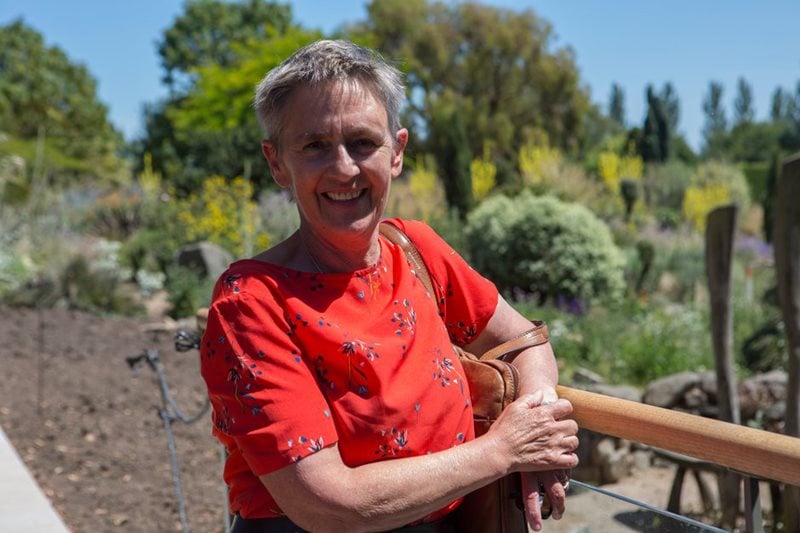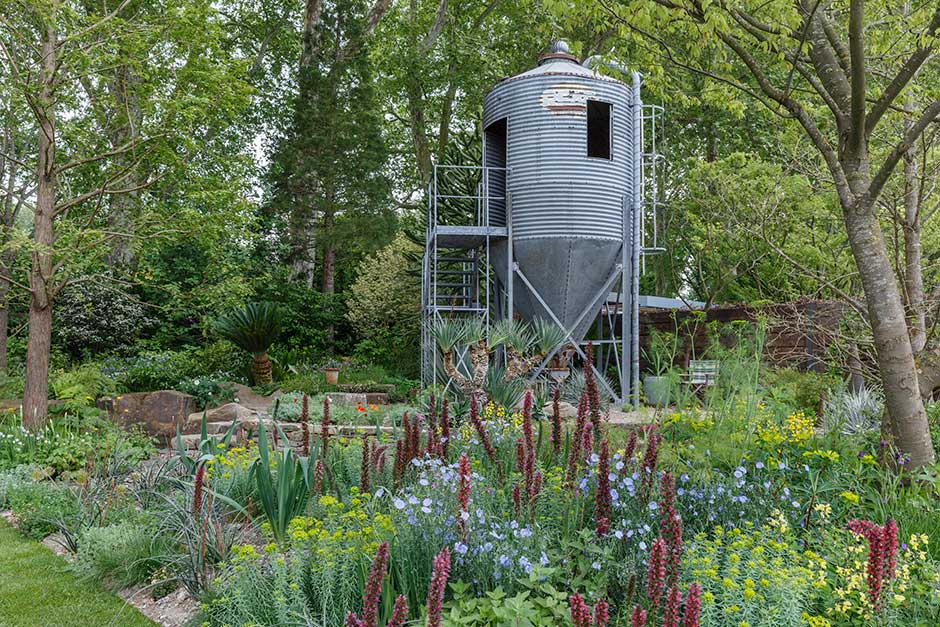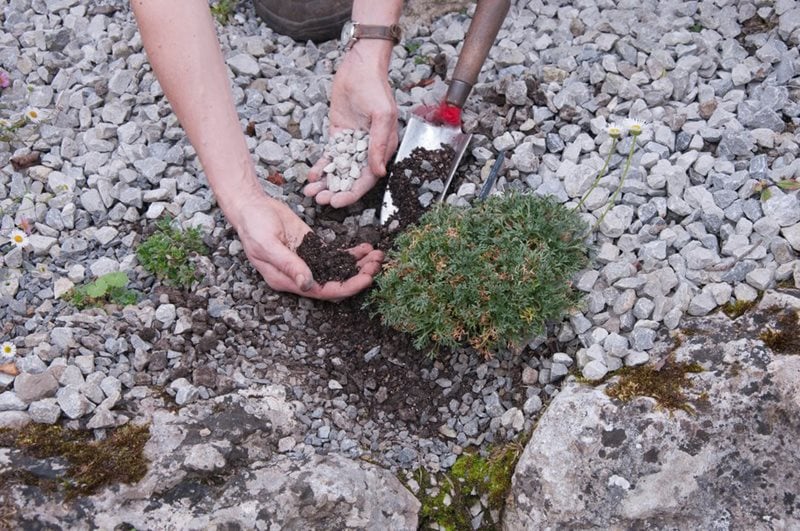Sarah Eberle returns to Main Avenue
The award-winning designer explains why she's teamed up with the Forestry Commission for her latest Chelsea project
 Gold-medal-winning designer Sarah Eberle has never been one to shy away from thought-provoking garden design at the RHS Chelsea Flower Show.
Gold-medal-winning designer Sarah Eberle has never been one to shy away from thought-provoking garden design at the RHS Chelsea Flower Show.
Whether it was recreating the works of Gaudi in 2017 with her Artisan Garden, Viking Cruises Garden of Inspiration, or spending eight years researching her famous garden based on Mars, 600 Days with Bradstone, Eberle has risen to the challenge time and time again.
Her Show Garden at the 2019 RHS Chelsea Flower Show – titled The Resilience Garden – will be no exception. Teaming up with the Forestry Commission for the organisation's centenary, Sarah will explore the challenges confronting forests in the face of climate change and what can be done to help them become more resilient.
“I like a meaty brief and something with purpose!” said Sarah. “I feel really strongly about climate change and the problems it poses with pests and diseases so I’m really excited about the garden.
“I’m currently doing a lot of research for the planting to understand how trees are affected by climate change. It’s also interesting to look at what can be done to enrich the genetic pool of our tree species, as well as potential alternative species for our forests.”
Why worry about forests?
 Sarah’s garden at Chelsea will be backed up by work currently being pursued by the Forestry Commission. The organisation is leading a number of projects that test how trees will be affected by the conditions expected with climate change in a bid to find the most resilient trees and secure the future of our forests.
Sarah’s garden at Chelsea will be backed up by work currently being pursued by the Forestry Commission. The organisation is leading a number of projects that test how trees will be affected by the conditions expected with climate change in a bid to find the most resilient trees and secure the future of our forests.
“In the UK we have quite a narrow palette of native trees,” said Sir Harry Studholme, Chairman of the Forestry Commission. “Trees that we often consider native, such as horse chestnut and sweet chestnut, were actually brought back from abroad by our ancestors many years ago.”
The lack of native species in UK forests could pose a problem in future. The theory is that the more genetic and species diversity a forest contains, the better able it’ll be to withstand the emergence of new threats and diseases. Some plants will naturally have better defence and be able to thrive where other plants fail.
“As we progress into the future we need to think about the trees that we have in the UK,” continued Sir Harry. “Rainforests are better able to protect themselves because of the diversity of species they have. In one hectare, they have more species of trees than we have in the entire country.
“The more species we have in our forests, the more resilient the forests become.”
Inspiration from the past
With this idea in mind, Sarah Eberle has been looking to an innovative gardener of the past to bring The Resilience Garden to life.
“The garden takes a lot of inspiration from William Robinson,” she explained. “He was a bit of a horticultural hot head at the time, frequently experimenting with horticulture. I’m not trying to be him with this garden, but I’m very inspired by him and what he stood for.”
Sir Harry agreed. “William Robinson left much of his estate, Gravetye, to the Forestry Commission and I think he would have wanted to raise the issues that we’re facing with climate change,” he said. “William really enjoyed experimenting with different species in the garden and wrote a fantastic book called The Wild Garden.
“This book changed the concept of gardening – moving away from the idea of bedding plants and structured planting to considering how gardens relate to the natural landscape around them and the forces of nature acting upon them.
“I think this ethos is deep within the gardening community now, but it was a new way of thinking in the Victorian times.”
Planting for the garden

Climate change doesn’t just mean an increase in temperature – it also brings with it the arrival of more extreme weather events, wetter winters and warmer, drier summers.
With all that going on, it makes sense for The Resilience Garden to explore planting in a variety of environments.
“We’re including various zones in the garden to reflect the variety of conditions that come with climate change,” said Sarah. “For example we’re going to have some dry zones, but also damper, wetter zones too. People can look at the groups of plants we use in each of these areas and apply them at home, for example if they have a rocky area or need ideas for for underplanting trees.
“We’re also using a lot of reclaimed material within the garden to reflect the importance of recycling. It’s important to consider how you can be environmentally friendly in your garden, recycling and reusing materials where you can.”
Sarah is yet to decide on a final line up for her planting in the garden, but it seems that the designer is taking inspiration from some of nature’s longest survivors.
“It’s still a bit early in the day to know for definite which plants I’m going to include,” she said. “But I’m looking at including some real dinosaurs – like ginkgo and monkey puzzle. These species have managed to exist over millennia, surviving ice age and nuclear attack.
“They’re very resilient to what life throws at them.”
Buy your tickets for the 2019 RHS Chelsea Flower Show

